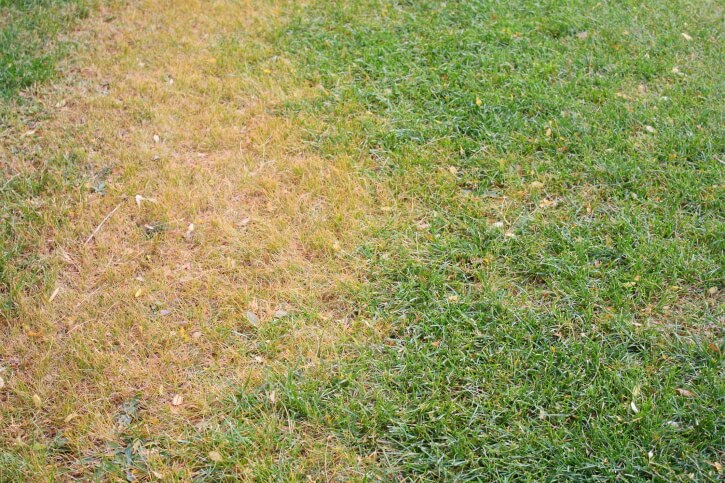
5 Common Types of Lawn Disease
A struggling lawn is an unattractive lawn. Typically, problems are indicated by leaf spots, discolored or dead grass, blades that shrivel or curl up, or other unsightly symptoms. Of course, insects, weeds, improper watering, or other conditions might be the culprit, but if you’ve ruled these out, then you might be looking at lawn disease. Here are some common lawn diseases and the ways in which they can be identified.
- Brown patch: This lawn disease is also known as summer patch and is caused by a fungus that thrives in warm temperatures and damp conditions. Here, the turf becomes thin and discolored in rough, circular patches. Individual grass blades will also have brown patch lesions on them.
- Fairy ring: This fungal grass disease can present in a variety of ways. There might be a ring of dead grass, sometimes surrounded by an additional ring of dark green turf. Sometimes the ring contains fast-growing, lush, dark-green grass. Or you may notice nothing more than a ring of mushrooms.
- Dollar spot: Also caused by a fungal pathogen, this turf grass disease blights the individual blades but doesn’t affect the roots or crown. This disease is readily identifiable, as it creates tan or straw-colored spots, about the size of a silver dollar.
- Pythium blight: Initial symptoms of this type of fungal blight are blackened patches of grass with a water-soaked appearance. You may also notice a cottony growth in the grass. This is an important disease to catch early, as it spreads quickly and kills the grass right down to the crown, eliminating the possibility of recovery.
- Red thread: This lawn disease first appears as small circular patches of off-colored grass, usually with a pink cast. The grass can almost look scorched, and upon closer inspection, it will have red or rust-colored threads on the blades.
Identifying a lawn disease in your yard is important, as the earlier you catch it, the easier it is to remedy. It’s a good idea to familiarize yourself with these and other lawn diseases, so you know what to look for throughout the growing season. If you can identify what diseases your lawn is susceptible to, you may also be able to adjust your lawn care (by fertilizing differently or changing your watering schedule, for instance) in order to discourage future occurrences.